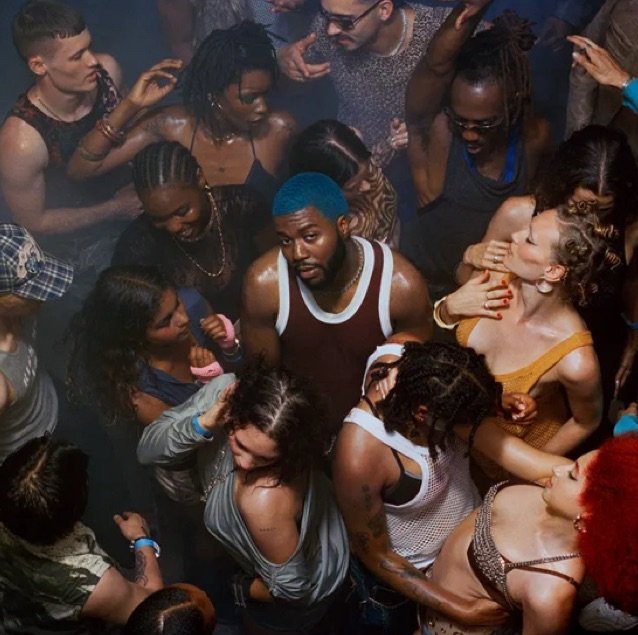
Blumhouse’s latest horror film, “Imaginary,” would have benefitted from a much greater sense of imagination. While there are occasional glimmers of a more playful, irreverent, and enjoyable version of this bubbling beneath the surface, the vast majority of “Imaginary” plays out like a dreadfully dull retread of some of the most worn tropes and narrative devices in the genre.
The result is a film that never once feels like its being driven by its own actual themes or characters, but is instead just doing its best to regurgitate the basic structure of what it seems to believe a horror movie has to. This, as one might guess, makes for an exceedingly bland and often downright boring film to endure, which is not something one hopes to say about a movie featuring a six-foot-tall monstrous teddy bear puppet, but alas, here we are.
TOP FIVE OF “IMAGINARY”
5. WEAK SPOT: The Blumhouse Model
Blumhouse has been an institution of the modern horror landscape for over a decade now, and for good reason. For a significant period, they were akin to something like Hammer in the ’50s and ’60s: a creative safe haven for filmmakers who wanted to explore big ideas through the guise of the horror genre. With standout films like Jordan Peele’s “Get Out,” Joel Edgerton’s “The Gift,” or David Gordon Green’s 2018 “Halloween,” Blumhouse delivered successful films that pushed the genre in interesting ways and garnered both commercial and critical acclaim.
However, as of late, Blumhouse’s track record has been less than stellar. “Five Nights at Freddy’s” was at least a commercial success for them (if an artistically misguided mess) but from “The Exorcist: Believer” to “Night Swim” to “Imaginary,” a disheartening trend has emerged in the production company’s output. These films do not feel driven by passion or a distinct creative voice, but rather, by a spreadsheet and a diagram. These are films made by-the-numbers, and all the worse for it.
So Jason Blum, if you’re reading this, hire me. Or, get some writers onboard these projects that have a genuine passion for the story at hand. Because so far, Blumhouse’s 2024 output (“Night Swim” and “Imaginary”) have both just felt like Mad Libs horror movies, derivative of great works but never even beginning to aspire to be great themselves. “Imaginary” is clearly inspired by some genre-molding horror classics, with strands of story structure lifted from films like “Poltergeist,” “The Shining,” and “A Nightmare on Elm Street,” but is somehow utterly content to just deliver an obscenely underbaked rehash of those films’ broadest strokes. It’s deeply disappointing.
4. WEAK SPOT: The Cold Open
Beyond just Blumhouse, an increasingly common element present in modern horror films is to have a setpiece right up-top, as soon as the movie begins, to hook audiences into the film and hold their interest.
“Imaginary” very much utilizes this structural trick, and it feels just as vapid and hollow here as it nearly always does. The tacked-on cold open is a bad idea to begin with, an algorithmically-driven decision to try and ensure audiences don’t tune out or get bored. There are films that do this well, but only when the opening is built organically into the film (Jordan Peele’s “Get Out” comes to mind as a film with an excellent opening sequence that works). More often than not, these opening sequences are very much not, and wind up just playing the film’s entire hand in the opening minutes.
The opening sequence of “Imaginary” is extra bad for a litany of reasons: the editing is horrendous, it starts out the primary performances on an exceedingly wobbly note, and it somewhat inexplicably immediately muddles the villain’s entire story. So not only does it fail to entice the audience and reveal every trick that the film is going to subsequently employ throughout the next hour-and-a-half of movie, it also immediately puts a bad taste in the audience’s mouth. It fails on every conceivable level.
3. The Best Performance of the Film: Verónica Falcón
“Imaginary” is not a film with strong performances. In fact, a good portion of the acting work done here feels erroneously misled and jarring within the context of the film.
Having said that, about midway through the film, Verónica Falcón turns up as Dr. Alana Soto and single-handedly brings a great deal of gravitas and joy to the proceedings. In her tense therapy sequence with Alice and imaginary friend Chauncey, Falcón brings a real, palpable sense of dread to her performance. It’s one of the only scenes in the entire film that director Jeff Wadlow allows to play out in a long, sustained take, and it’s actually a great choice. One can feel the tension ratcheting up between Falcón and the young Pyper Braun in an authentic and impactful way. It works, really well, and is the best sequence in the film by quite a wide margin, thanks in large part to Falcón’s performance.
Also, she gets the unenviable task immediately afterward of asking Alice’s step-mom, “Has Alice taken up any new hobbies lately? Like ventriloquism?” and she 1000% sells the shit out of that line. There are many underwhelming elements of “Imaginary,” but Verónica Falcón is a tremendous bright spot and she absolutely rules.
2. WEAK SPOT: The Never Ever
A good chunk of “Imaginary” is spent building up to the idea of Chauncey’s ‘other world’ in which he resides and takes people. Referred to as the Never Ever, despite being central to the entire story of the film, this element is never properly developed and winds up being woefully underbaked and unimpressive.
Narratively, what is the Never Ever? Feels like a pretty crucial question the film would want to answer, but alas, audiences are destined to leave the film scratching their heads despite multiple minutes of expository screentime which are all devoted to conflicting explanations. The Never Ever is simultaneously the inside of Alice’s creative mind, Chauncey’s lair, a Universal Halloween Horror Nights maze in-waiting, and an alternate realm for ill-gotten imaginary friends. But as you probably guessed, it can’t actually be all of those things at once, and so it is rarely-if-ever an actual cohesive place within the story.
Instead, it’s just a derivative design that blends The Further from “Insidious” with The Netherworld from “Beetlejuice” to create a hallway that connects various interior apartment sets.
There is so much potential here left entirely untapped. Is it like the Dream World from “Dream Warriors,” where characters bring their own creativity and dreams in to inhabit it? Do other Imaginary friends live there, or is it just Chauncey? I don’t know, and neither does the movie.
1. WEAK SPOT: Thematically Empty
Worst of all, “Imaginary” is a film that deals with some of the most fundamentally profound and complex issues of the human condition: childhood, cycles of abuse, trauma, dreams, shared stories, etc. And yet, it does not even begin to scratch the surface of these ideas, instead opting to steer entirely clear of exploring these themes in any kind of meaningful way. If the film was more concerned with authentically exploring its own characters and story than it was with rotely checking off boxes so it fits into the confines of a bog-standard horror film, “Imaginary” could have been something special.
There’s a bit toward the end of the film where the characters have to draw a door on a wall in order to enter the Never Ever. This is a direct reference to “Poltergeist,” in which characters do the same thing. But “Poltergeist” was actually homaging “The Twilight Zone” episode, ‘Little Girl Lost,’ which features the same thing. In a story about cycles of abuse and repressed trauma, it feels like intrinsically exploring this formal link between these different horror stories from across three generations would be a pretty obvious and interesting choice. How are stories changed over the course of several decades? What do the changes say about the time and place they were told in? What does it say about both Alice and her step-mom Jessica that Chauncey’s wolf-in-sheep’s-clothing act lured them both in at respectively vulnerable periods of their life?
These are all questions which could be explored in meaningful ways through this implementation. And yet, “Imagination” has zero interest in even beginning to do that.
RGM RATING
(D-)
Overall, “Imaginary” is a disappointment. It continues a trend of deeply underwhelming films from Blumhouse, and honestly just feels like some poor intern was tasked with sorting through a pile of scripts, searching for any film that would feature a children’s toy antagonist after the breakout success of “M3GAN” in January of last year. But the result is a muddled and misguided work that leaves much to be desired.
Discover more from RATINGS GAME MUSIC
Subscribe to get the latest posts sent to your email.










